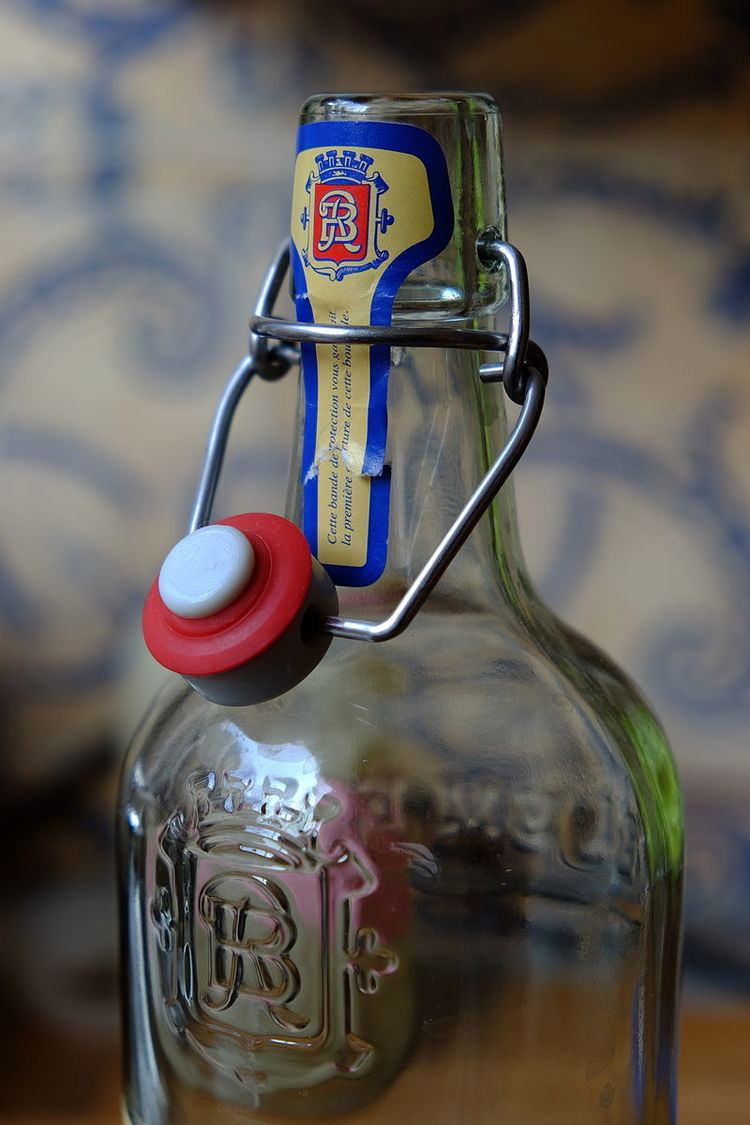 | ||
A flip-top, swing-top, or Quillfeldt stopper (after the inventor, Charles de Quillfeldt) is a type of closure frequently used for bottles containing carbonated beverages, such as beer or mineral water. The mouth of the bottle is sealed by a stopper, usually made of porcelain or plastic, fitted with a rubber gasket and held in place by a set of wires. The bottle can be opened and resealed repeatedly and without the use of a bottle opener, with the wires acting in the same way as a latch clamp. The flip-top was the dominant method of sealing beer and mineral water bottles prior to the invention of the crown cork.
Contents
History
Prior to the creation of the flip-top bottle, bottles were often made from blown glass and sealed with a cork, which was difficult to open by hand and often unreliable, particularly for carbonated beverages such as mineral water or beer.
A precursor to the flip-top, the "bail" or "Kilner" closure was invented in 1859, where a lid with gasket was held by a wire harness and sealed by a separate set of wires.
The first flip-top closure was created by Charles de Quillfeldt in the United States, who filed for a patent on 30 November 1874, receiving patent number 158406.
